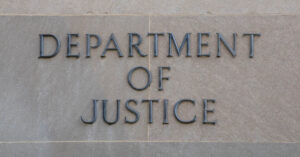On Aug. 12, 2020, the Federal Housing Finance Agency (FHFA) announced a 50 basis-point fee on refinance transactions that would take effect only 20 days later. Mortgage originators were instantly up in arms not only because this would reduce refinance volume and income but also because they had promised borrowers rates and costs on already locked loans that did not include this fee.
FHFA had pulled the rug out from under these originators. After strenuous objections from the Mortgage Bankers Association and other groups, FHFA delayed until Dec. 1, 2020, the start date of the adverse-market fee, also known as the loan- level price adjustment.
The initial announcement was flawed not only because of the surprise early-implementation date but also because it included a general statement that increased risk was the reason for the hike. The government-sponsored enterprises (GSEs) first contended that all refinances were inherently riskier. Although cash-out refis may have increased risk, a rate-and-term refinance to a lower payment cannot increase the risk of late payment or default.
A revised statement made it clear that this was about losses related to the COVID-19 pandemic, since forbearance comes at a cost. FHFA imposed this fee of its own accord with no warning to or input from mortgage originators.
Deepening fissures
This dispute between the mortgage industry and FHFA made it clear that the parties were not working together as closely as they should. Everyone in the mortgage business, from originators to the GSEs, are intermediaries between the borrower and the party holding the beneficial interest of the borrower’s mortgage payments.
Originators need to work with the GSEs while realizing that both are part of this borrower-to-investor chain. Although mortgage securitization can and does exist outside the GSEs, it is not the day-to-day reliable and liquid commodity that is GSE securitization. It is the agencies’ securitization process that makes the 30-year fixed-rate mortgage possible.
This refinance surcharge imposed last year is not the only item of its kind. The increased fees after the U.S. Treasury placed the GSEs into conservatorship on Sept. 6, 2008 are still being collected even though the added fees have repaid all of the GSEs’ losses associated with the Great Recession.
From Dec. 1, 2020, most GSE refinances will be hit with the 0.5% cost hike. This was deemed necessary for Fannie Mae and Freddie Mac to deal with the presumed losses they’ll sustain due to pandemic-caused forbearances.
Forbearance isn’t free and unlike the add-on after the Great Recession, this fee is being implemented early. It is imperative that the GSEs remain healthy and this is especially true once they exit conservatorship.
Adequately capitalized
Much has been written about the causes of the Great Recession. Everyone understands that it was induced by highly risky mortgage lending. Bad mortgages resulted from overly lax private-label securitization and, one could argue, due to demand from the U.S. Department of Housing and Urban Department (HUD) that the GSEs weaken their underwriting guidelines.
By 2007, Fannie and Freddie were required by HUD to show that 55% of their mortgage purchases involved loans to borrowers with low to moderate incomes. Moreover, 38% of all purchases had to be from underserved areas, usually inner cities, and 25% had to involve purchases of loans to low-income and very low-income borrowers. This mandate proved fatal to the GSEs.
Although it’s debatable about who was more responsible for the mortgage mess, there is one fact that is often ignored. The size of the losses for privately securitized mortgages was about the same ($180 billion to $200 billion) as the losses to the GSEs. There was, however, a massive and existential difference. While some banks were inadequately capitalized, banks as a whole were.
Contrast this to the GSEs, which were not adequately capitalized. Worse yet, they were apparently unaware of this. In early July 2008, James Lockhart, then-director of the Office of Federal Housing Enterprise Oversight (which was the GSEs’ supervisor at the time), gave an interview in which he claimed that the GSEs were “adequately capitalized.”
As the journey to privatize the GSEs continues, FHFA director Mark Calabria is calling for them to raise sufficient capital so that they are able to absorb any losses. After the Lehman Brothers bankruptcy in 2008, it is notable that none of the four major U.S. banks — JPMorgan Chase, Bank of America, Wells Fargo and Citigroup — went broke. In fact, they were able to absorb the losses of the banks they acquired. On the other hand, Fannie and Freddie were broke and needed Treasury-provided salvation. The banks were adequately capitalized, but the GSEs were not.
Best message
It may be difficult at present to believe, but prior to 2008, the GSEs’ capital requirement was 0.45% of their outstanding mortgage guarantees. They were not prepared for the losses to come.
Mortgage originators should embrace FHFA’s revised policy. The best message the mortgage industry can send is that it learned from the Great Recession and will not burden taxpayers. If not, the industry will wind up being further regulated — think the Consumer Financial Protection Bureau times three. While this is happening just as FHFA is trying to raise capital to get the GSEs out of conservatorship, it provides an opportunity to tie up all the loose-end risks and to do this correctly.
Accordingly, the GSEs will provide updated estimates of forbearance-associated losses in their quarterly reports. Those who supply mortgages to the GSEs should suggest a policy frame-work for when these two add-on fees should end. Let’s assume that, five years from now, the losses from today’s forbearances and the post-2008 foreclosures have been recovered, allowing sufficient reserves to be in place. At that point, these add-on costs should cease.
● ● ●
The relationship between mortgage originators and the GSEs should consist of working together to solicit each other’s input while recognizing that each are part of the borrower-to-investor chain and should create quality products to avoid additional regulations. Originators should demand that the GSEs set policy to assure that when the anticipated post-forbearance losses are recovered, additional consumer fees will end. Borrowers are paying for past losses and anticipated new losses but should not be responsible for recapitalizing the GSEs. ●
Author
-

Dick Lepre is a loan agent for CrossCountry Mortgage LLC. He has been in the mortgage business since 1992 and has been writing a weekly email newsletter on macroeconomics, mortgages and housing since 1995. Lepre (NMLS No. 302379) is from New York City, but he has lived in the San Francisco Bay Area since 1968. He has a degree in physics from Notre Dame. Follow him on Twitter @dicklepre.





